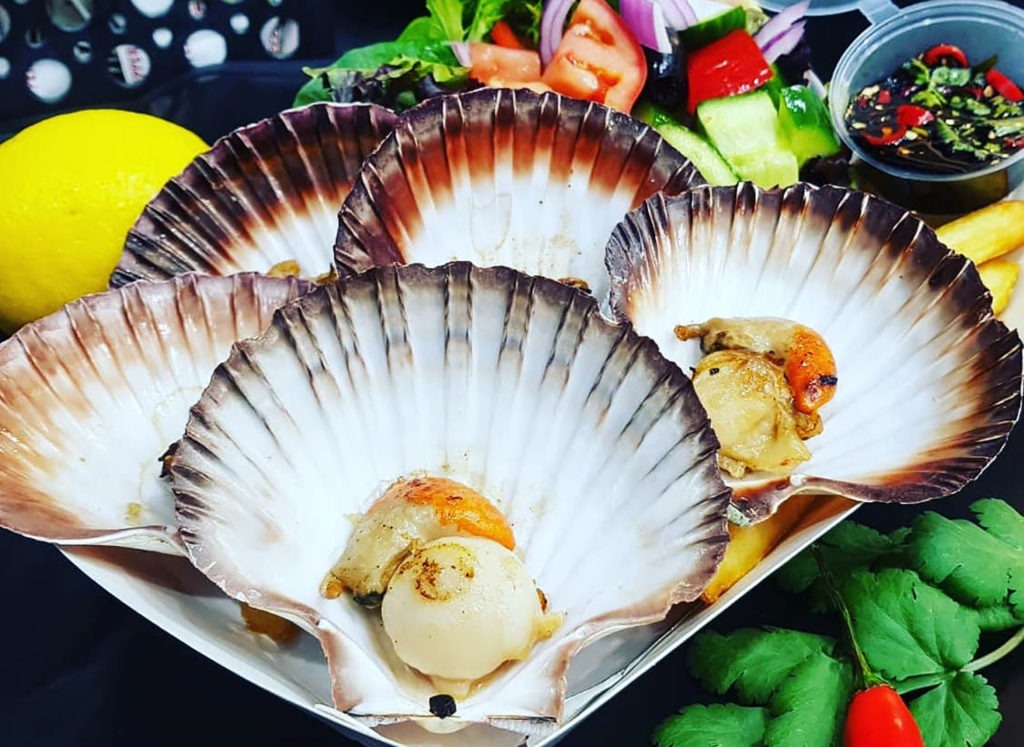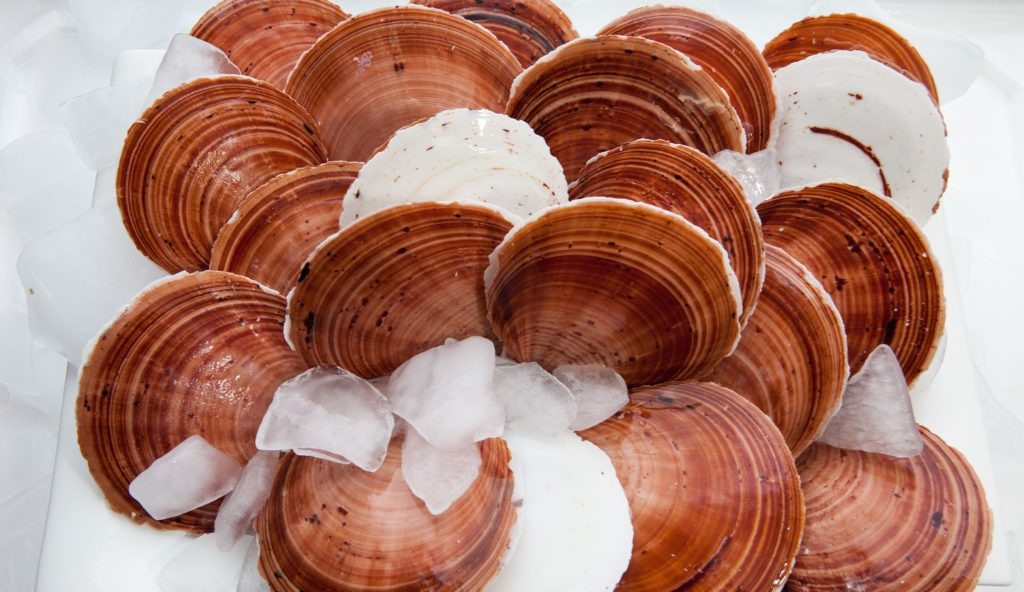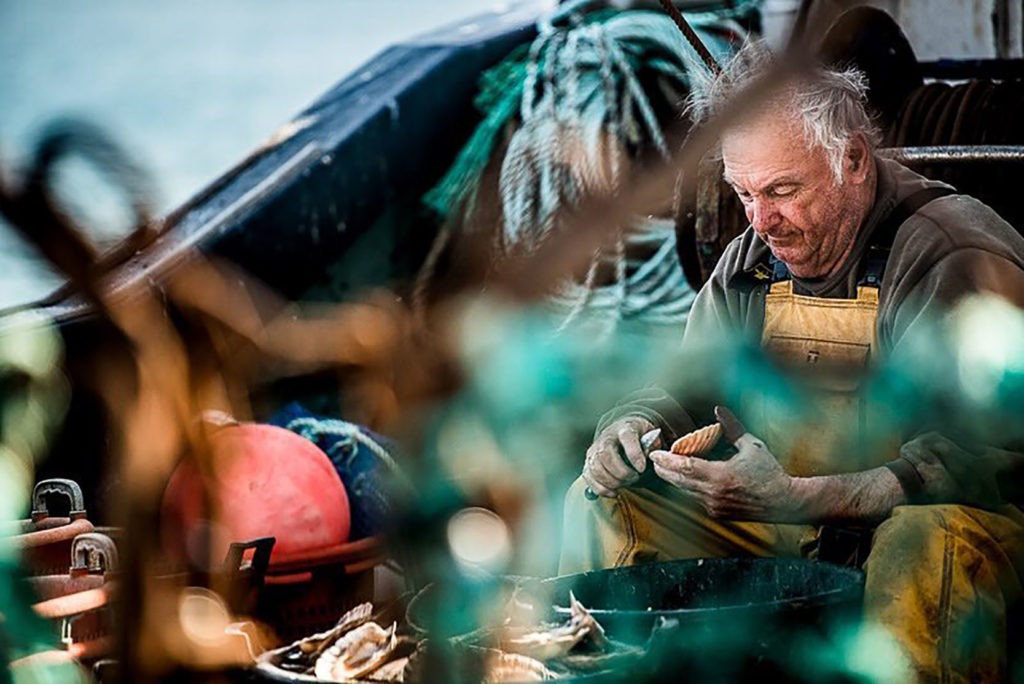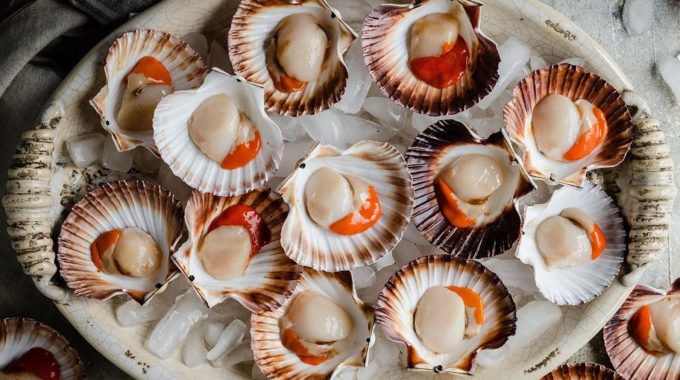Tasmanian Scallop Fishery reopens
The Tasmanian Scallop Fishery has opened for the first time in six years, after low scallop stock numbers led to its closure in 2015. Is overfishing to blame?
Tasmania is the largest producer of seafood by value in Australia. It has one of the most biologically diverse marine environments in the world. The region produces world-class abalone, award-winning mussels and oysters, and delectable southern rock lobsters. But possibly the best loved local seafood of all would have to be Tasmanian scallops.
“It’s an iconic seafood down here,” says Bob Lister, Chief Executive of the Tasmanian Scallop Fishermen’s Association. “A lot of Tasmanians wait for the opening of the scallop season. Locals really love scallops. You’d have to be here to understand how keen they are to get their hands on them. It’s also big in terms of attracting tourists to the state.”
The Tasmanian Scallop Fishery targets the commercial scallop known as Pecten fumatus, also known as the southern scallop. This is one of three species naturally occurring in Tasmania. However, for the past six years, the Tasmanian Scallop Fishery has been closed due to low stock numbers. It only reopened for commercial harvesting on September 1 this year. While it might sound as though overfishing must be the culprit behind low scallop numbers, Lister explains that this is not the case.
“Scallops are a pulse fishery,” he says. “You have good years, and you have bad years. We can’t predict it. It’s not overfishing or poor management; it’s just the nature of the species.”

New recruits
There are a number of factors that can contribute to low scallop stocks, including what’s known as low recruitment. This basically means low numbers of new baby scallops. When scallops spawn, they shoot their roe. The larvae then floats around for about 30 days or more before settling onto the salty environment on the seafloor and starting to grow. It takes about three years for a baby scallop to reach full harvesting size. But sometimes nature can intervene in the process, leading to fewer baby scallops growing.
“The difficulty is that when scallops spawn, the larvae go up into the water column [the water between the sea floor and the water’s surface],” Lister explains. “If you have a westerly storm or westerly winds, the larvae tend to go out off the shelf and just get lost.
“But if you have easterly weather and suitable conditions, they’ll settle on the bottom in a harvestable area on sand or silty bottom. But we can’t predict where they go and when they go. Scallops also move around and can naturally die off after five or six years. That’s why it’s called a pulse fishery, and why we have good years and bad.”

Careful consideration
Tassie scallop lovers will be reassured to know there are two scallop fisheries in the region. The Tasmanian scallop fishery extends to 200 nautical miles from the Tasmanian coast, with the exception of Bass Strait, where its jurisdiction covers 3-20 nautical miles offshore. This fishery is managed by the Tasmanian Department of Primary Industries, Parks, Water and Environment (DPIPWE). The Bass Strait Central Zone Scallop Fishery, which covers most of Bass Strait, is managed by Australian Fisheries Management Authority (AFMA).
While the Tasmanian Scallop Fishery has been closed, the Bass Strait Central Zone Scallop Fishery has remained open. To determine whether a scallop fishery should remain open or be closed for commercial harvesting, the fishery undergoes regular scallop surveys. This involves scallop fishers searching for viable commercial scallop beds.
“Each year in both Tasmania and Bass Strait, we run vessels out to have a look at specific areas to determine the quality and quantity of scallops that are out there,” Lister says. “We call them research surveys. And based on that information, we then prepare a management plan for the fishery. What areas can open, what areas should be closed.”

‘Tis the season
These surveys also determine the quantity of scallops that are available for harvest. DPIPWE and AFMA then decide on scallop season opening dates and a total allowable catch in shell weight. The Tasmanian season opened on the first of September this year and will run until the end of December. The Bass Strait season opened on July 12 and will run through to the end of December. In Tasmania, fishers have an allowable capture of 1500 tonnes of shell weight scallops. In Bass Strait, the allowable catch is 3905 tonnes.
“Most scallops spawn between December and March each year, during the warmer months,” Lister says. “We leave them alone during that period of time. And when we do our research surveys, we only look for scallops which are of harvestable size.
“In Tasmania, a harvestable size is 90mm across the widest part of the shell. In Bass Strait, it’s 85mm. We look for those beds that have high concentrations of scallops of that size or larger. They then become the target areas to harvest in.”

Close calls
The recent closure of Tasmania’s Scallop Fishery is not entirely out of the ordinary. In order to protect stock numbers, scallop fisheries close quite regularly. And this is not just a Tasmanian Scallop Fishery phenomenon; the Bass Strait zone has also been closed in the past. Fisheries around the world also close to allow scallops to grow and reproduce.
Overall, Australia has four commercial scallop fisheries which are based on the southern scallop. Two are classified as sustainable – the Bass Strait Central Zone Scallop Fishery and the Port Phillip Bay Dive Scallop Fishery in Victoria. Two are classified as depleted: the Tasmanian Scallop Fishery and Victoria’s Ocean Scallop Fishery. There are also smaller southern scallop fisheries in South Australia and NSW’s Jervis Bay.
Off the coast of Western Australia, there are several species of scallop. However, only the southern saucer scallop is abundant enough to support a commercial fishery. In Queensland, which also produces the saucer scallop, continued declining stocks have led to the closure of two major scallop fishing regions. But the second-largest region, an area off Fraser Island and the Southern Great Barrier Reef, has remained open, to mixed reactions.
The Australian Marine Conservation Society says the decision to keep this fishery open is risking the recovery of depleted saucer scallop stocks. It may stop them from recovering altogether. However, the Queensland Seafood Industry Association says a complete closure would be “devastating” to scallop fishing communities.

Gone fishin’
So what has the Tasmanian Scallop Fishery closure meant for Tassie scallop fishers? While fishers might not be able to harvest scallops, scallop vessels also operate across multiple fisheries. Some are in the giant crab fishery, some fish for rock lobsters or squid. Others operate in the Australian salmon fishery. And while it was hoped that the Tassie scallop fishery wouldn’t stay closed for such a long period, Lister says that fishers were aware that stock numbers were low. Further, that closure was required to allow areas to recover.
“We knew that there was no new recruitment coming through,” he says. “So we were able to predict that probably we wouldn’t be able to open for three or four years.
“The Tasmanian scallop fishery has been closed several times over the last 15 years. And I might add, this is a worldwide phenomenon with scallops. You always have good years and bad years, closures and openings.”

As Tasmanian as scallop pie
While scallops are delicious pretty much any way you eat them, the Apple Isle is famous for its amazing Tasmanian scallop pies. These contain fresh Tassie scallops smothered in a creamy curry sauce and baked in puff pastry, and you can find them in all good bakeries during scallop season. But while Lister agrees that the Tasmanian scallop pie is “magnificent”, he also has his own personal favourite ways to enjoy this marine delicacy.
“I like curried scallops with rice,” he says. “It’s another very popular meal in pubs and clubs and restaurants around Tasmania. I also like to grill scallops in the half shell with sweet chilli sauce and sliced shallots. The best part about scallops is that if you buy a kilo of Tassie scallops or Bass Strait scallops, that’s exactly what you get. There’s no scales or bones or heads to throw away. It’s fully edible. Everyone loves them, me included.”
The Tasmanian Scallop Fishery is an important part of Tasmania’s seafood industry, so it’s essential that it operates under a fishery management plan supported by strict rules.
Giving individual beds time to recover stock levels will allow fishers to harvest and consumers to enjoy iconic Tasmanian scallops well into the future. While closures will continue to occur, one thing is for certain: Tassie scallops will always be worth the wait.









